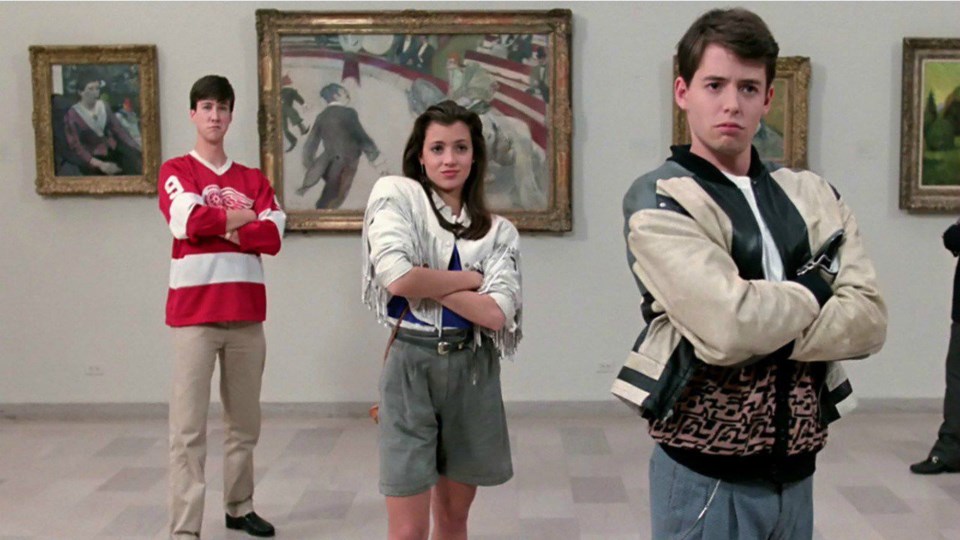Vancouver Public Library and V.I.A. have teamed up to help you discover new reads, hidden book gems and surprising literary finds.
Planning to skip the Art Vancouver show, which runs April 25 to 28, because you are tired of pretending to understand art? Are you sick of relying on the step back, chin rub, head tilt and sigh manoeuvre while feeling like you need to call out that the emperor has no clothes? Check out these graphic novels, DVDs, books and walking tours to help you make your art appreciation more authentic.

Milestones of Art by Willi Bloess
Created by author and artist Willi Bloess, Milestones of Art is a brilliant, art-history themed graphic novels series. Broken into six separate volumes, Bloess sketches biographies for Andy Warhol, Pablo Picasso, Vincent Van Gogh, Salvador Dali, Keith Haring and Frida Kahlo. Aside from learning about the lives of foundational western artists in a very fun a readable comic book format, Willi Bloess does something very unique and educational: Bloess emulates the individual style of each subject. Highly recommended.
Public Art Vancouver Brochure Series
New to art? Start local. Take a walk through the city and you will find some dynamic and unusual works of public art commissioned by the City of Vancouver’s Public Art Program – in fact, you’ve probably already noticed them. Take this brochure series with you for biographical and conceptual accounts of the artist and the installation. Start at the Vancouver Public Library and checkout Ron Terada’s illuminated sign: The Words Don’t Fit the Picture or head over to the Olympic Village to see Myfanwy Macleod’s The Birds. Your choice!
Seekers and Travellers: Contemporary Art of the Pacific Northwest Coast by Gary Wyatt
Traditional, cross-cultural and contemporary art are explored in this evocative book of Indigenous art. Highlighting 36 of the most significant artists on both sides of the Canada-U.S. border, acclaimed writer Gary Wyatt has created yet another gem.
What are you looking at? The Surprising, Shocking, and Sometimes Strange Story of 150 Years of Modern Art by Will Gompertz
Gombertz offers a narrative history of modern art from Impressionism to present day by cutting out the opaque language of the art world and answering the questions that everyone wants to ask: Why is this considered art? Why is it worth so much money? What does contemporary art mean? My kid could draw better than this, why is it famous? Starting in mid-19th-century France with Monet and the impressionists to the early-20th-century New York City of emigre Marcel Duchamp and then to the present-day England of Damien Hirst and the Young British Artists, Gompertz offers a witty, stripped-down -- but not dumb-downed -- interpretation of modern art. At last!
Art 21: Art in the Twenty-first Century [DVD series]
If you think 20th century art is difficult to grasp, try the twenty-first century! This must-watch DVD series takes viewers behind the scenes of contemporary artist’s studios, homes, and communities. If you are interested in learning 21st century art, this PBS presentation is guaranteed to untangle its complexities.
Women Artists: An Illustrated History by Nancy Heller
In 1971, art historian Linda Nochlin wrote an essay in the periodical ARTNews called, "Why Have There Been No Great Women Artists?" Since then, traditional art history books have been rewritten to reveal artists who were “forgotten” because of their gender. Heller's book begins to fix this gap by providing information on 125 women artists. Women Artists: An Illustrated History is a readable narrative for scholars and novices alike and an excellent source for colour reproductions of paintings and sculpture by women from the Renaissance to present day.
..isms Understanding Art by Stephen Little
“Isms” are often criticized for compartmentalizing the Western canon into easy-to-swallow-packets, but for a new learner, easy-to-swallow is exactly what one needs for understanding the who, what, where, when, and why of art. For example, when we label Monet as an “impressionist,” and Manet as a “post-impressionist” the meaning behind their subtle visual differences becomes clear; we recognize both the artistic dialogue and the historical context through which each work was created. This pocket-size book teaches the meaning of, the history around, and the affiliated artists for the western world’s most important “isms” – from humanism to present day’s postmodernism.


